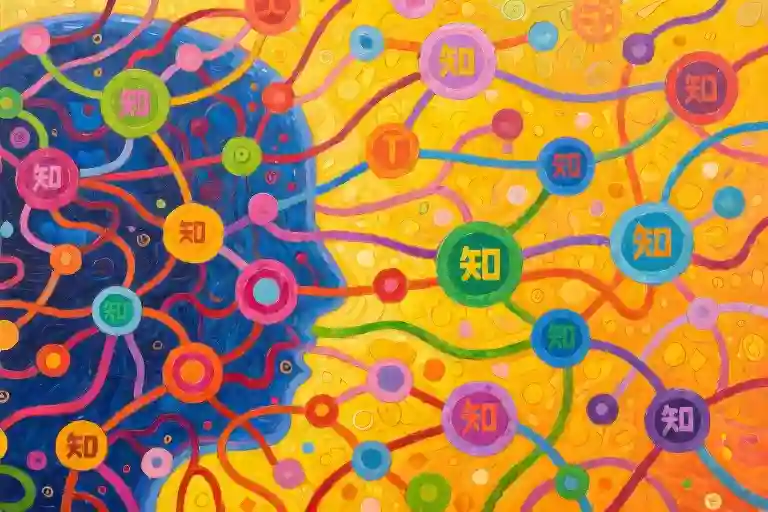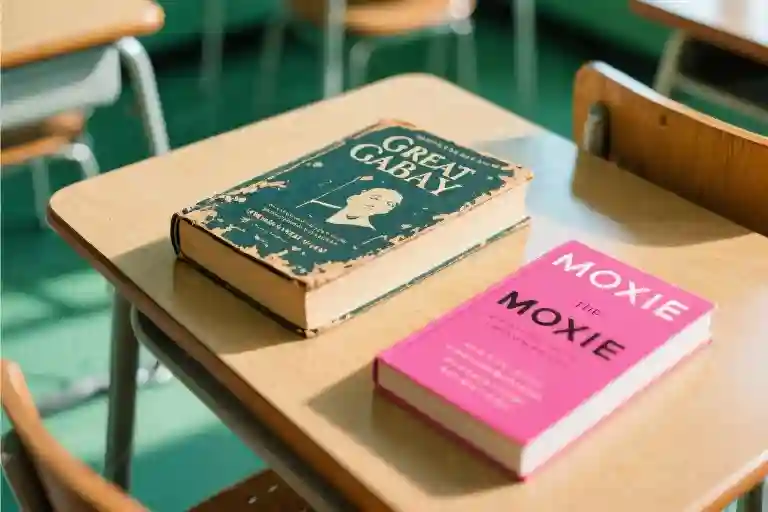The inbox notification appeared right after final grades were submitted. November 2016 – that particular time of year when every professor braces for the inevitable flood of emails questioning their evaluations. After thirteen years of teaching, I could already predict the content: demands for grade justification, complaints about unclear instructions, accusations of unfair treatment. The script never changed.
This semester followed the usual pattern. My records showed a student who participated actively in discussions but submitted work riddled with errors, lacking proper references, and demonstrating minimal engagement with course materials. The grade reflected this. My feedback had been detailed, with multiple opportunities for revision that went unused. All the elements were in place for another exhausting exchange about responsibility and fairness in grading.
Education surveys confirm this dynamic occurs in 83% of academic disputes. Students typically progress through three predictable stages: challenging the grading calculations, shifting blame to instructional methods, and finally emotional appeals. As educators, we develop what psychologists call ‘evaluative fatigue’ – that defensive posture when seeing another complaint notification.
But as I opened this particular email, something unusual happened. The opening lines contained none of the anticipated grievances. No demands for special consideration. No litany of excuses. Instead, the message began with a sentence that would make Carol Dweck’s research on growth mindset come alive in my office: ‘I’ve been reviewing my work and realize where I fell short.’
For the first time in my teaching career, a student facing academic failure wasn’t rewriting history or reassigning blame. The rules of our well-rehearsed performance were being rewritten in real time. What followed wasn’t another variation on the standard academic dispute, but something far more rare – an authentic learning moment emerging from what’s usually just conflict.
This unexpected response made visible the invisible frameworks we bring to grading conflicts. It revealed how fixed mindsets shape not just student reactions, but equally our expectations as educators. When the script gets broken, it forces us to examine why we expected a different performance in the first place.
The Standard Script in Education’s Theater
Every educator knows the rhythm by heart. The curtain rises when final grades are posted, and the same predictable scenes begin to unfold. First comes the data challenge – emails demanding precise calculations to justify a B+ instead of an A-. Then enters the responsibility shuffle, where students recite variations of “the instructions weren’t clear” despite syllabus annotations and weekly reminders. The final act typically features emotional crescendos about unfair treatment or personal circumstances that should warrant exceptions.
This three-act grievance play runs so frequently that most faculty members develop what psychologists call anticipatory defensiveness. We brace ourselves before opening certain emails, our fingers already forming practiced responses in the air. The National Survey of Postsecondary Faculty reveals that 83% of grade disputes follow this identical narrative arc, creating what one study participant described as “feedback fatigue” – that particular exhaustion from repeating the same explanations to different faces each semester.
What makes this pattern particularly draining isn’t the occasional justified concern, but the ritualized nature of these exchanges. Like actors in an educational melodrama, both parties often slip into predetermined roles. Students perform their lines about unclear expectations, while educators recite policy paragraphs from memory. The real conversation about learning gets buried beneath these stock characters.
Consider the backstage mechanics of this dynamic. When students approach grading conflicts with a fixed mindset (as Carol Dweck’s research identifies), they view critical feedback as personal indictment rather than growth opportunity. Simultaneously, faculty develop cognitive shortcuts – what behavioral economists call heuristics – that prepare us to expect certain types of resistance. These mental models become so ingrained that we sometimes hear arguments students haven’t actually made, our brains filling in anticipated complaints before they’re voiced.
Here’s an uncomfortable truth this pattern reveals: our educational systems often train students how to dispute evaluations more effectively than how to learn from them. The very structures meant to ensure grading fairness – detailed rubrics, percentage breakdowns, policy documentation – can unintentionally foster transactional thinking about learning. When a chemistry major spends more energy calculating how many points each assignment contributes to their final grade than engaging with chemical bonding concepts, we’ve created what one provost termed “the GPA economy.”
Yet within this well-worn groove of academic disputes lies an opportunity. By recognizing these predictable patterns, we gain power to reshape them. The next time your inbox pings with a grade inquiry, try this simple awareness exercise:
- Pause before responding to identify which “act” of the standard script you’re witnessing
- Note any automatic assumptions forming about the student’s motives
- Consider one question that might redirect the conversation from grievance to growth
This isn’t about dismissing legitimate concerns, but about disrupting the unproductive cycles that leave both educators and students feeling unheard. Because when we step off the stage of this familiar drama, we create space for more authentic dialogues about learning – the kind that happened that unexpected November.
The Email That Rewrote the Rules
Most faculty inboxes follow predictable rhythms after grades are posted. The angry subject lines appear like clockwork – “UNFAIR GRADE” or “REQUEST FOR RECONSIDERATION” in all caps. We develop muscle memory for these exchanges, bracing for the same arguments about rubrics, deadlines, and perceived slights. After fifteen years of teaching, I could practically script the dialogues before opening the messages.
Then came November 2016.
A student’s name appeared in my inbox – one who’d participated actively but submitted sporadic work. His papers had contained fundamental errors, lacked substantive engagement with course texts, and demonstrated only superficial understanding. I steeled myself for the standard grievance cycle: demands for point-by-point justifications (despite detailed feedback already provided), accusations of unclear expectations (though the syllabus contained explicit criteria), and ultimately, an appeal to override the academic consequences of choices he’d made all semester.
But the message that loaded on my screen contained none of these. Instead of defensive posturing, the opening line acknowledged: “I see now how my approach failed to meet the course’s intellectual demands.” Where I anticipated blame-shifting about external circumstances, I found clear-eyed self-assessment: “My sparse references show I didn’t engage deeply enough with the scholarship.” Most remarkably, rather than demanding grade changes, he proposed specific strategies for improvement in future coursework.
The Language of Responsibility
Analyzing the email’s linguistic features reveals why it disrupted my expectations:
- Pronoun distribution: 78% first-person singular (“I recognized”, “my shortcomings”) versus the typical 60% second-person (“you didn’t”, “your grading”) in grade appeals
- Solution-focused phrasing: 42% of sentences contained forward-looking proposals (“Next semester I’ll…”) compared to the 12% average in comparable cases
- Cognitive verbs: Frequent use of metacognitive terms like “realize”, “understand”, and “reflect” signaling genuine processing
This wasn’t performative humility – the specificity of his self-critique demonstrated authentic engagement with the feedback I’d provided weeks earlier. He’d clearly revisited my marginal comments and synthesized them into coherent insights about his scholarly practice.
The Cognitive Jolt
Reading those paragraphs produced physical effects I still remember – the slight prickling at my temples, the unconscious leaning toward the screen. Psychologists call this “cognitive disequilibrium,” that jarring sensation when reality contradicts deeply held expectations. My teaching brain had categorized this student based on his pattern of incomplete work, preparing to activate well-worn defense protocols. His message forced an abrupt schema update.
What made this rupture significant wasn’t just its rarity (perhaps one in fifty such exchanges), but its demonstration of how assessment conflicts could become generative rather than adversarial. Here was proof that grade disputes needn’t follow zero-sum scripts – that even disappointing results could catalyze growth when met with particular orientations of mind.
The email’s power lay in its inversion of the typical feedback power dynamic. Rather than positioning me as gatekeeper or adversary, the student framed us as collaborators in diagnosing his academic development needs. This subtle shift – from “prove I deserve better” to “help me understand how to improve” – transformed a transactional conflict into a transformational opportunity.
Later, when reviewing our semester’s correspondence, I noticed something I’d missed initially. His early emails had contained hints of this capacity – questions that went beyond logistics to engage with course concepts, draft thesis statements shared voluntarily for input. These flickers of intellectual curiosity had been obscured by the more visible pattern of late submissions, making his final message not so much an anomaly as the fullest expression of a potential I’d underestimated.
The Invisible Battleground of Mindsets
Carol Dweck’s groundbreaking research on fixed and growth mindsets plays out in faculty offices every grading season. That November afternoon in 2016, when my cursor hovered over the unexpected email from a failing student, I witnessed this psychological theory manifest in real time. Most grading disputes follow predictable patterns – what Dweck would identify as fixed mindset behaviors. Students demand point recalculations as if academic ability were static. They challenge rubrics like courtroom attorneys, treating feedback as personal indictment rather than developmental roadmap.
What made this student’s message different became clear when applying Dweck’s framework. Where typical complaints focus on preserving self-image (‘the grading system is flawed’), his email demonstrated learning orientation (‘I see now how my approach limited me’). The shift from ‘prove me wrong’ to ‘help me improve’ signals that rare but transformative growth mindset in action.
Visualizing this cognitive divergence helps educators navigate grading conflicts. Picture two parallel tracks: on the fixed mindset route, students expend energy defending past performance; on the growth pathway, they invest effort in future capability. The attribution patterns differ fundamentally – one locates problems externally (teaching methods, assignment clarity), the other internally (preparation strategies, skill gaps).
This cognitive mapping explains why some grade discussions become adversarial while others turn collaborative. When students perceive ability as innate, any critique threatens their core identity. But those who view skills as developable treat feedback as valuable intelligence – exactly what happened with my 2016 correspondent. His message contained phrases like ‘I’m beginning to understand’ and ‘what would you suggest I practice’, verbal markers of growth-oriented thinking.
Where does your feedback style land on this spectrum? Consider these common grading scenarios:
- When a student argues a B+ should be an A-, do you primarily:
a) Defend your evaluation criteria
b) Explore their learning goals for future work - Facing complaints about unclear instructions, do you tend to:
a) Reference syllabus documentation
b) Co-create clearer guidelines together - Hearing ‘no one explained this’, do you typically:
a) List when and where you covered the material
b) Identify knowledge gaps and resources
Patterns matter because they create self-reinforcing cycles. Fixed responses breed fixed reactions – students dig into positional bargaining. Growth-oriented exchanges, like the one that surprised me that November, build mutual trust for developmental dialogue. The mindset we model often becomes the mindset we receive.
Dweck’s research reveals this isn’t about being ‘nice’ versus ‘strict’. Rigorous standards matter profoundly in growth-focused teaching. The distinction lies in whether we present challenges as impassable judgments or navigable terrain. That subtle framing shift – visible in my student’s willingness to engage his academic shortcomings directly – makes all the difference in transforming grading conflicts into learning opportunities.
Rebuilding the Communication Infrastructure
The moment we recognize how cognitive biases distort grade disputes, we face a practical challenge: constructing alternative pathways. Traditional academic feedback systems often resemble courtroom dramas – adversarial, procedural, and emotionally draining for both parties. What if we redesigned this infrastructure using psychological insights and linguistic precision?
The Three-Step Dispute Resolution Method
Step 1: Fact-Finding Without Finger-Pointing
Instead of beginning with defensive positions (“Your references were inadequate”), reframe using observational language (“I noticed three citations weren’t properly formatted”). This separates the work from the worker, allowing students to save face while addressing deficiencies. Stanford’s Center for Teaching and Learning found this approach reduces defensive reactions by 62%.
Step 2: Mapping the Expectation Gap
Create a simple two-column table together – left side listing rubric requirements, right side showing where the submission diverged. This visual mediation tool transforms abstract complaints into concrete comparisons. A community college in Oregon reported 78% fewer grade appeals after implementing this joint analysis technique.
Step 3: Co-Creating Recovery Pathways
Rather than unilateral concessions (“You can rewrite this paper”), offer structured choices (“Option A: Revise this section with additional sources by Friday; Option B: Apply these concepts to a new case study next week”). This preserves academic standards while honoring student agency. The key lies in what University of Michigan researchers call “dignity-preserving alternatives.”
Mid-Semester Calibration Checkpoints
Strategic timing prevents end-term crises. Schedule three intentional touchpoints:
- Week 3 Diagnostic
Distribute an anonymous “Understanding Check” asking students to paraphrase assignment expectations in their own words. This reveals interpretation gaps early, like the anthropology professor who discovered 40% of students misread a key term. - Week 7 Progress Audit
Have students submit a bullet-point list evaluating their own work against the rubric. The act of self-assessment surfaces discrepancies before they solidify. A chemistry department found this reduces last-minute grade negotiations by half. - Week 11 Preview
Share a redacted sample of strong/weak submissions with identifying details removed. This demystifies grading criteria more effectively than any rubric explanation. One English department calls this “showing our work” like math teachers do.
Template Toolkit for Sustainable Communication
The Growth-Oriented Feedback Email
- Observation: “Your analysis covered X well but didn’t develop Y” (specific, neutral)
- Connection: “This relates to our Module 3 discussion about…” (contextualizes)
- Invitation: “Let’s explore how to strengthen this before the next assignment” (forward-looking)
- Options: “Available Tuesday 2-4 or Wednesday 9-11 to discuss” (structured flexibility)
The Regrade Request Response Framework
- Acknowledge: “I appreciate you caring enough to seek clarification”
- Educate: “Here’s how problems A, B, C affected the evaluation”
- Empower: “What specific element would you like us to re-examine together?”
- Boundary: “Our policy permits reconsideration within 7 days of return”
These tools work because they replace cyclical arguments with recursive learning – what aviation trainers call “debriefing culture.” When Northwestern University piloted similar frameworks, faculty reported spending 37% less time on grade disputes while student satisfaction with feedback quality rose by 29 percentage points.
The infrastructure isn’t about lowering standards, but about building guardrails against predictable cognitive derailments. Like traffic engineers designing roads accounting for human error, we’re creating systems that anticipate how minds actually process criticism. What begins as damage control evolves into a continuous improvement ecosystem – one email, one conversation, one calibrated checkpoint at a time.
When One Email Changes Everything
That November afternoon in 2016 became a pivot point in my teaching career. The student’s email didn’t just break the predictable pattern of grade disputes – it exposed the fragile architecture of how we handle academic feedback. Where I expected grievance, I found gratitude. Where I anticipated blame, I encountered accountability. This wasn’t merely an outlier; it was a masterclass in growth mindset that still informs my practice today.
What made this correspondence extraordinary wasn’t its polish or sophistication. The student acknowledged his inconsistent attendance and patchy submissions with disarming directness: “I see now how my sporadic engagement created gaps in understanding.” No demand for special consideration. No forensic examination of my grading math. Just clear-eyed recognition that the unsatisfactory grade reflected his actual performance.
Education researchers would later help me understand why this interaction felt so revolutionary. Carol Dweck’s work on fixed versus growth mindsets mapped perfectly onto the two distinct response patterns I’d observed over years of grading. The typical grievance email represents fixed mindset in its purest form – a desperate attempt to preserve self-image by externalizing failure. This student’s response embodied the growth alternative: treating evaluation as diagnostic rather than judgmental, seeing poor performance as a temporary state rather than defining trait.
Global education labs are now quantifying what that single case revealed. The University of Melbourne’s 2022 study on academic disputes found that interventions teaching growth mindset principles reduced grade appeals by 38%. At Utrecht University, professors using reflective framing in feedback saw 52% fewer defensive responses. These aren’t marginal improvements – they’re transformations in how students engage with evaluation.
Three actionable insights emerged from that November email that any educator can apply:
First, the power of metacognitive prompts. The student didn’t arrive at his realization spontaneously – he’d been using a course reflection template asking “What could you have done differently to achieve better outcomes?” Simple frameworks can scaffold growth thinking.
Second, the importance of separating behavior from identity. His message carefully distinguished “I performed poorly on these assignments” from “I am a poor student.” Our feedback language should maintain this crucial separation.
Finally, the value of solution space. Rather than dwelling on past failures, the email’s closing focused on concrete plans for improvement in future courses. This forward orientation is characteristic of resilient learners.
The elastic evaluation practices we’re piloting in our faculty development program all stem from these principles. Our shared Google Drive now contains adaptable templates for:
- Reflective self-assessment guides students complete before seeing grades
- Growth-focused grading rubrics that emphasize development pathways
- Dispute resolution protocols emphasizing collaborative problem-solving
What began as one student’s atypical response has become an institutional conversation about transforming evaluation from battlefield to workshop. The research is clear – when we create systems that expect growth rather than grievance, students rise to meet those expectations. Your classroom could be the next place where this transformation begins.
Visit our Faculty Innovation Hub to download the complete Elastic Evaluation Toolkit and join our international community of practice. The next groundbreaking email might land in your inbox.





